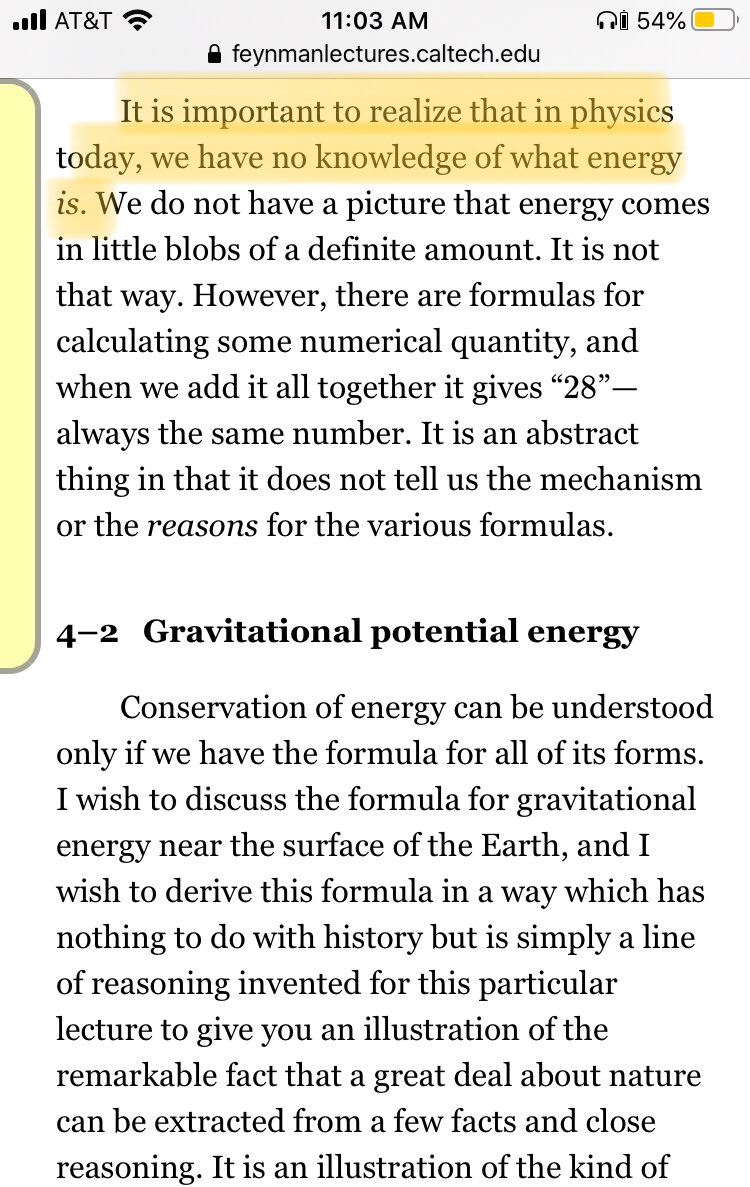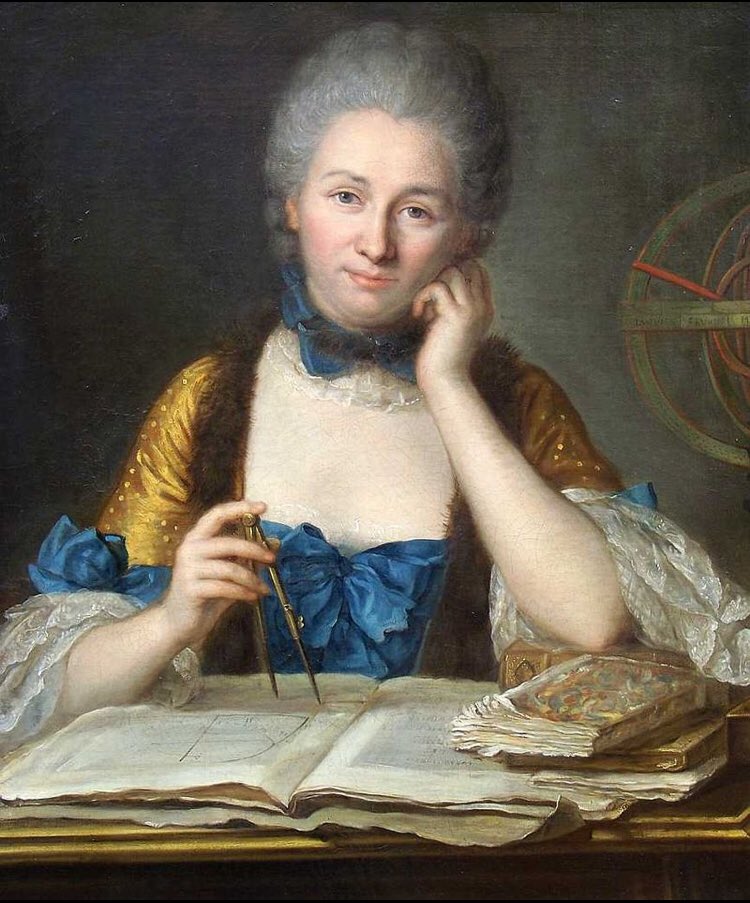1/ What is energy? How was it discovered? How did the concept become a bedrock of our modern understanding of the universe? — A Sunday  https://abs.twimg.com/emoji/v2/... draggable="false" alt="🧵" title="Thread" aria-label="Emoji: Thread">
https://abs.twimg.com/emoji/v2/... draggable="false" alt="🧵" title="Thread" aria-label="Emoji: Thread">
2/ What is energy?
We can& #39;t see it with our eyes nor feel it with our senses. Indeed, as Feynman put it: "We have no knowledge of what energy 𝘪𝘴." (Feynman Lectures vol. 1, 4-1)
Yet, we know it& #39;s real because it& #39;s one of our best explanations of what happens in reality.
We can& #39;t see it with our eyes nor feel it with our senses. Indeed, as Feynman put it: "We have no knowledge of what energy 𝘪𝘴." (Feynman Lectures vol. 1, 4-1)
Yet, we know it& #39;s real because it& #39;s one of our best explanations of what happens in reality.
3/ These explanations are based on 𝘤𝘰𝘯𝘴𝘦𝘳𝘷𝘢𝘵𝘪𝘰𝘯 𝘰𝘧 𝘦𝘯𝘦𝘳𝘨𝘺: accounting for all forms of energy, the total energy transferred to/from and in the system remains constant.
How was this conservation discovered?
How was this conservation discovered?
4/ In school, we first learn about kinetic and potential energy in Newtonian mechanics. However, Newton did not discover these forms of energy. Instead, he formulated a conserved quantity of motion we now call momentum = mass × velocity.
5/ A heated debate followed between Newton& #39;s followers and his rival, Leibnitz, who advocated a quantity he called 𝘷𝘪𝘴 𝘷𝘪𝘷𝘢 (living force) = mass × velocity².
Experiments done by Gravesande showed the impact of falling balls was indeed proportional to their velocity².
Experiments done by Gravesande showed the impact of falling balls was indeed proportional to their velocity².
6/ Enter Émilie du Châtelet, who studied math+philosophy w the likes of de Maupertuis, held court w Voltaire, translated Newton& #39;s principia, & wrote a definitive opus on foundations of physics in 1740s. She understood the importance of vis viva and advocated its conservation law.
7/ This is what became known as kinetic energy, corrected by Coriolis in the 1820s to include a factor of 1/2, and shown to satisfy the work-energy theorem: net work done on the system equals the change of its kinetic energy.
8/ All this follows from Newton& #39;s laws of motion. But eversince the works of Leibnitz and du Châtelet on the "living force" there was a sense that there is something more to conservation of energy. That it is more than a quantity conserved due to a mathematical theorem.
9/ Indeed, physicists view conservation of energy as a 𝔭𝔯𝔦𝔫𝔠𝔦𝔭𝔩𝔢: we expect it to constrain even our future theories.
The reason is a deep connection between conservation laws & symmetries of Nature. Specifically, energy conservation ⇔ time translation symmetry.
The reason is a deep connection between conservation laws & symmetries of Nature. Specifically, energy conservation ⇔ time translation symmetry.
10/ This connection was proven rigorously in a large family of "least-action" theories by Emmy Noether, a great mathematician who, despite systemic discrimination, made significant contributions to math and physics. https://youtu.be/Rqfj7n5aSwY ">https://youtu.be/Rqfj7n5aS...
11/ Noether was invited by Hilbert to resolve a puzzle in Einstein& #39;s theory of general relativity: energy didn& #39;t seem to be conserved anymore! In return, she provided a general theory of invariants in dynamical systems. https://youtu.be/04ERSb06dOg ">https://youtu.be/04ERSb06d...
12/ Conservation of energy is a deep regularity of Nature across many scales. As our theories have been revolutionized in our attempts to understand the universe from the ordinary to the subatomic to the intergalactic, energy has remained conserved. Will it ever fail to do so?

 Read on Twitter
Read on Twitter



